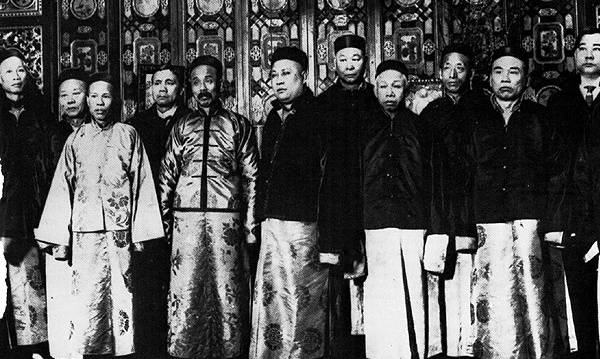The Six Companies: Difference between revisions
No edit summary |
m (1 revision(s)) |
(No difference)
| |
Revision as of 13:54, 7 October 2007
Officers of the Chinese Six Companies ("Chinese Consolidated Benevolent Association") in 1890.
Though most Americans didn't realize it, the Six Companies that ruled Chinatown were relatively benevolent organizations. They were formed to help the Chinese come from and return to China, to take care of the sick and the starving, and to return corpses to China for burial. Later, they tried to protect their people from the abuses San Francisco's Chinese suffered at the hands of racist hoodlums. They were run by the richer and better educated among the immigrants, in the paternalistic manner typical of 19th century Chinese society. By 1868 the original Kong Chow Company had split into six: the Sam Yup Company, the See Yup Company, the Ning Yuen Company, the Yeung Wo Company, the Hop Wo Company and the Hip Kat Company (the latter being the favorite among Chinese beatniks).
Distinct from the Six Companies were the secret societies which later became the notorious fighting tongs. Though some have said that the tongs were a purely American phenomenon, they evolved from the secret societies that flourished in China. One of the biggest was the San Ho Hui, or Triad Society, alias the Hung Society and the Society of Heaven and Earth. Originally a secret, revolutionary political organization opposed to the Manchu dynasty, in San Francisco it became something akin to a Chinese version of the Cosa Nostra. By the late 19th century, the San Ho Hui had evolved into a hydra-headed mass of warring tongs, each fighting for its piece of the opium, gambling, protection, and yellow slave trades.
--Dr. Weirde
Contributors to this page include:
Bancroft Library,Berkeley,CA - Publisher or Photographer
Weirde,Dr. - Writer
Death Ships Prev. Document Chinese Exclusion Law Next Document

